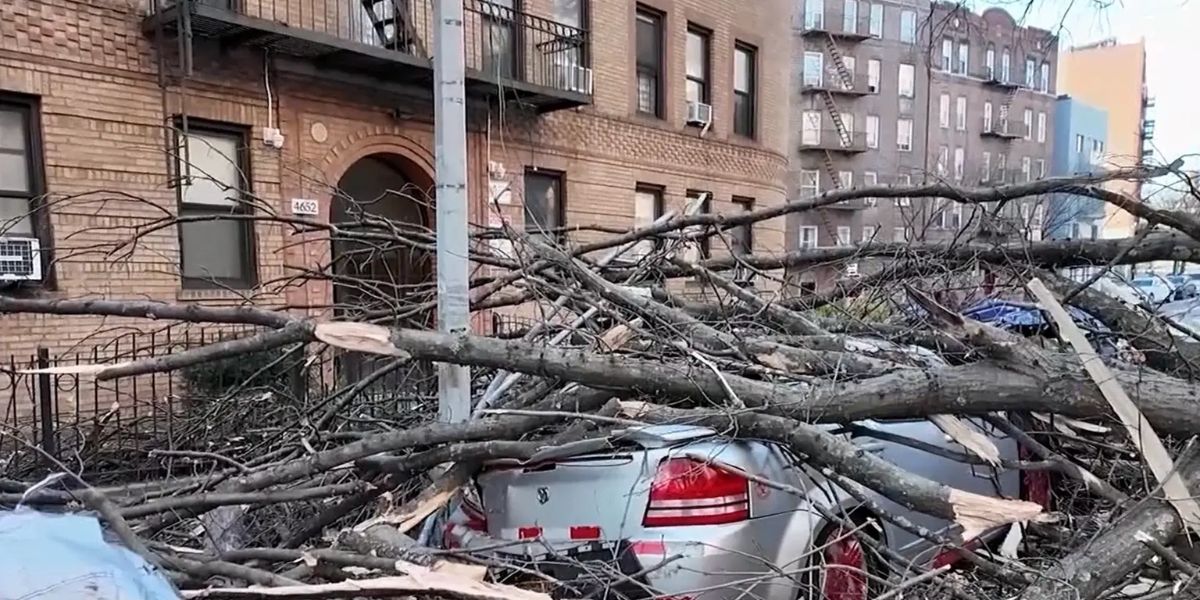If you’ve stepped outside on Long Island recently, you may have noticed something unmistakable—strong winds that seem to be a constant presence.
Whether you’re walking along the beach, driving through town, or just sitting in your backyard, the gusts are hard to miss. But why is it so windy all of a sudden?
Let’s take a closer look at the reasons behind this increase in wind activity.
Seasonal Weather Patterns
One of the primary reasons for the recent uptick in wind is the changing seasons. Spring, in particular, is notorious for its blustery conditions. During this time, warm air from the south often clashes with cooler air from the north, creating a pressure difference. This shift in pressure causes air to rush from areas of high pressure to low pressure, resulting in wind.
On Long Island, this seasonal transition is especially noticeable. As temperatures rise and the environment begins to thaw, the atmosphere becomes more dynamic, leading to the gusty conditions we’re experiencing. While spring winds can be a nuisance at times, they are a natural part of the season’s shifting weather patterns.
Coastal Influence
Being surrounded by water, Long Island’s weather is heavily influenced by the Atlantic Ocean. The difference in temperature between the land and sea can create localized wind patterns. When the land heats up faster than the water during the day, the warm air rises, and cooler air from the ocean rushes in to take its place, creating a sea breeze. In the evening, the process reverses, and a land breeze may occur. These coastal effects contribute to a constant flow of wind, particularly near the shores.
Additionally, coastal storms or low-pressure systems that form in the Atlantic can bring strong winds to the area. These systems can intensify wind conditions, especially if they move closer to the coastline, further boosting wind speeds.
Atmospheric Conditions and Storm Systems
Long Island is also affected by larger weather systems, such as cold fronts, low-pressure systems, or even the tail end of a passing storm. These systems often bring stronger winds as they push through the region. Cold fronts, for example, can cause a sudden shift in wind direction and speed as the cold air moves in, replacing the warm air that was there before. The change can feel dramatic, with gusty winds lasting for hours or even days, depending on the size of the system.
Occasionally, Long Island experiences the remnants of tropical storms or nor’easters, which can bring much stronger winds to the area. These systems are typically associated with heavy rainfall and powerful gusts, causing wind speeds to soar.
Local Topography and Wind Gusts
It’s important to note that Long Island’s unique topography can also amplify wind gusts. With the island’s flat, open landscape, there are fewer natural barriers—like mountains or tall buildings—that can slow down or block the wind. As a result, the winds can move freely across the land, leading to stronger and more consistent gusts. This is especially true in areas that are more exposed, such as the south shore or the Hamptons.
What Does This Mean for You?
If you’ve been feeling the wind more intensely lately, you’re not alone. These gusts are a mix of seasonal shifts, coastal effects, and larger atmospheric systems that have all converged. While it’s impossible to predict exactly how long this windy stretch will last, the good news is that the winds are a natural part of the island’s weather cycles.
So, the next time you’re out on Long Island and feel that breeze pushing through, remember—it’s a result of nature’s seasonal rhythms and the dynamic weather patterns that make our coastal region so unique. And while the gusts might be a bit much at times, they’re also a reminder of the powerful forces at play in our atmosphere.
From strong frontal systems to the distance between pressure systems, there are a lot of moving parts to what makes a windy day.
What causes a windy day?
1. Jet Stream
- The jet stream is a fast moving flow of air in the upper atmosphere that flows in a wavy pattern across the globe.
- The polar jet stream drives in cooler air from the North and the subtropical jet stream brings in warm air from the South.
- These fast-moving upper-level winds can mix down to the surface, increasing wind speeds.
- Stronger Jet stream = stronger winds / Weaker Jet stream = calmer winds
2. High and Low Pressure Systems
- Strong pressure gradients are normally associated with large differences in atmospheric pressure over short distances.
- This is seen with cold fronts and low-pressure systems. Behind these storm systems, lies strong winds and a sharp drop in temperatures.
3. Spring Patterns
- As Winter comes to a close, Spring arrives with a wide range of weather conditions.
- It can bring winter storms to severe storms.
- As storm systems move through our borough, what normally follows is a major temperature swing. Southerly winds from the Gulf bring rain and warmth and Northerly winds from Canada bring dry and cold air. These patterns are coupled with gusty winds.
As we transition into a warmer season, the windiest time of year is usually March and April. In recent years, early 2018 and 2022 was very windy due to winter storms and severe storms in our area.
We’ve had a lot of windy days so far this year, and recently strong gusts caused tree damage, power outages, rapidly spread brush fires and even brought dangerous driving conditions on the bridges.







